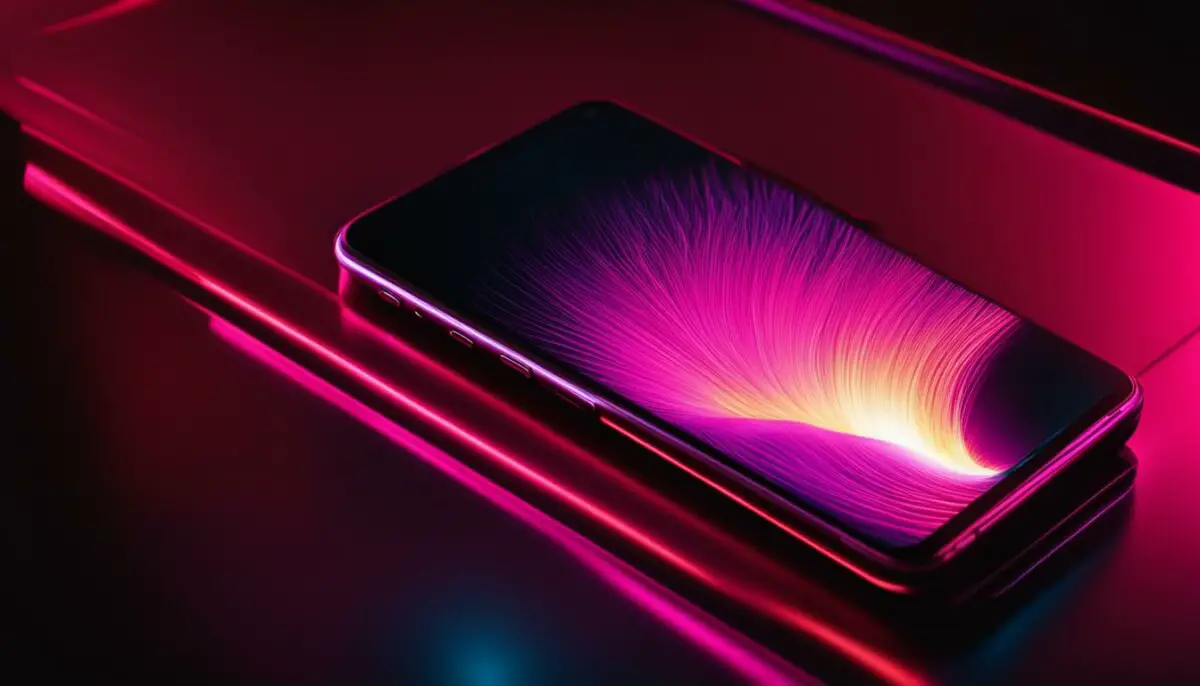Last Updated on 6 months by Francis
When it comes to choosing a smartphone, there are a plethora of factors to consider. From camera quality to battery life, there’s no shortage of features to keep in mind. However, one feature that you might not have considered is whether or not the device comes equipped with infrared technology.
Infrared technology allows devices to communicate with each other via an infrared signal. This feature can be incredibly useful for a variety of purposes, from controlling your TV to sharing files with other devices. But what smartphones have infrared, and how do you know if a device is equipped with this feature?
In this article, we’ll dive into everything you need to know about smartphones with infrared technology. We’ll discuss the top devices that come equipped with this feature, explain how to use it effectively, and explore the future of infrared technology in smartphones. By the end of this article, you’ll have a much better understanding of what smartphones have infrared and why this feature is worth considering when choosing your next device.
Contents
Key Takeaways
- Smartphones with infrared technology can communicate with other devices via an infrared signal
- Having an infrared feature on your smartphone can be useful for tasks like controlling your TV or sharing files
- Top smartphones with built-in infrared include models from Samsung, Xiaomi, and Huawei
- In addition to smartphones with built-in infrared, there are many devices that support infrared via an external adapter
- While infrared technology has some limitations and challenges, it remains a useful feature for many smartphone users
Understanding Infrared Technology in Smartphones
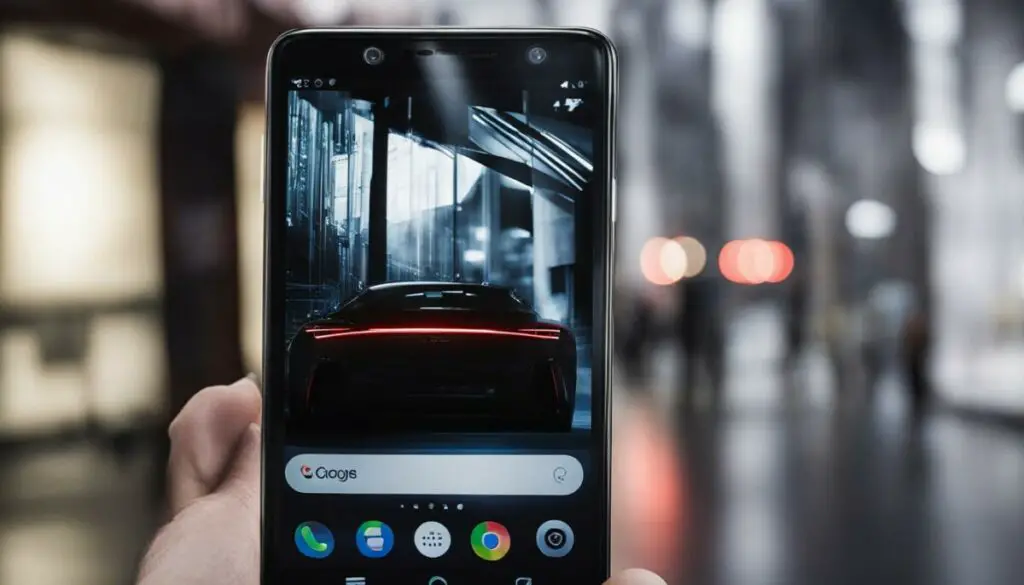
If you are looking for smartphones with infrared technology, it’s essential to understand how this feature works and its benefits. Infrared technology is a wireless communication technology that uses infrared radiation to transmit signals between devices. It operates using a line-of-sight communication mechanism, which means that the devices need to have a direct line of sight with each other to establish a connection.
Many modern smartphones come with infrared-enabled features that allow them to connect with various electronic devices, such as TVs, air conditioners, and home theater systems. This capability provides users with remote control functionality, enabling them to operate their devices from a distance.
Infrared technology in smartphones also enables them to transfer files between two devices using an infrared light beam. This functionality is highly useful in situations where you need to transfer files between devices that don’t have Bluetooth, Wi-Fi, or NFC capabilities.
When compared to other wireless communication technologies, infrared technology has certain advantages and disadvantages. On the one hand, it provides users with a secure and reliable connection that is not susceptible to interference or hacking. On the other hand, the range of infrared technology is limited, and it requires a clear line of sight to the receiving device, which can be a significant limitation in certain situations.
Overall, smartphones with infrared technology are incredibly versatile and can be useful in various situations. In the following section, we will look at the top smartphones available in the market that come with a built-in infrared feature, allowing us to enjoy the benefits of this technology.
Top Smartphones with Built-in Infrared

Are you looking for a smartphone with an infrared feature? Look no further than our top picks for the best smartphones with built-in infrared.
| Smartphone | Key Features |
|---|---|
| Samsung Galaxy S21 Ultra |
|
| Xiaomi Mi 11 Ultra |
|
| OnePlus 9 Pro |
|
| LG V60 ThinQ 5G |
|
These smartphones pack powerful features and come with built-in infrared capability, making them the best options for users who want to use their smartphone as a remote control for their home appliances or transfer files wirelessly.
Don’t miss out on these top smartphones with built-in infrared technology!
List of Smartphones with Infrared Capability
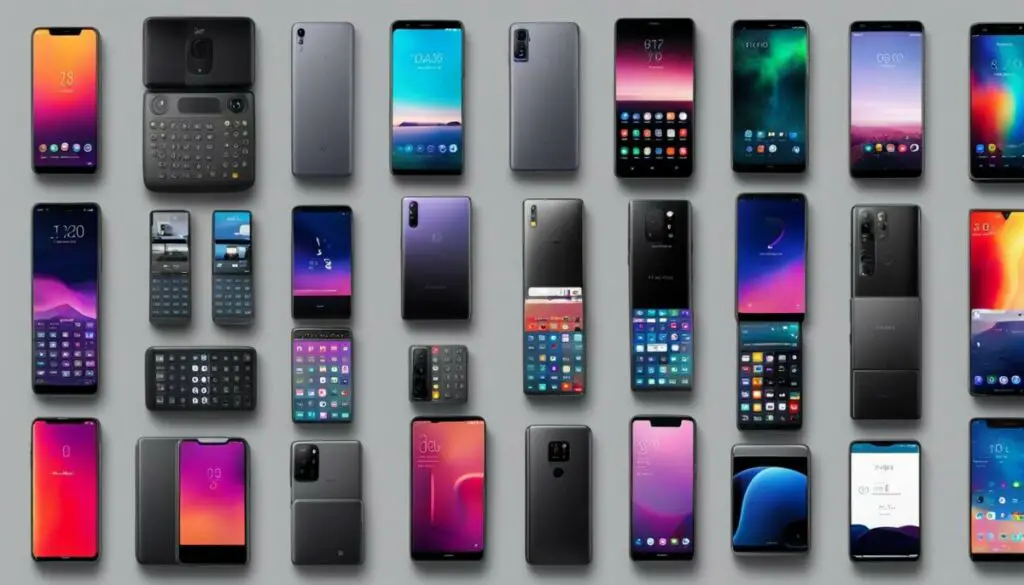
When it comes to choosing a smartphone with an infrared feature, there are plenty of options available in the market. Here is a comprehensive list of smartphones that support the infrared capability:
| Brand | Model |
|---|---|
| Samsung | Galaxy S21 Ultra 5G |
| Xiaomi | Mi 11 Ultra |
| OnePlus | OnePlus 9 Pro |
| Huawei | P40 Pro |
| Vivo | Vivo X60 Pro+ |
| LG | LG G8 ThinQ |
| Sony | Xperia 1 II |
These smartphones come with various features and price ranges, making it easier for consumers to find the perfect option that suits their needs and budgets. From high-end flagships to affordable mid-range models, there is something for everyone.
Infrared compatible smartphones are not limited to the latest models. Older models such as the Samsung Galaxy S6, Galaxy Note 5, and Sony Xperia Z5 also come with infrared capability. It is important to note that not all smartphones have this feature, so it is essential to check the specifications before making a purchase.
Having a list of smartphones with infrared capability can help consumers make an informed decision when choosing a smartphone. With this feature, users can take advantage of infrared technology to control other electronic devices or transfer files quickly and efficiently.
How to Use Infrared Feature on Smartphones

Now that you know which smartphones support infrared, let’s learn how to make the most of this feature.
To use the infrared feature on your smartphone, you need to have an infrared sensor installed on your device. Once you have verified this, you can activate the feature from your device settings. Depending on the device, this setting may be located in the “Connections” or “Remote Control” section of the settings menu.
Once you have activated the feature, you can use it for various purposes, such as:
- Controlling other electronic devices: With your smartphone’s infrared feature, you can control various electronic devices like TV, air conditioning, or home theater system. Simply download the relevant app from Google Play or App Store and sync your device to control these devices remotely.
- Transferring files: Infrared also allows you to transfer files like photos, videos, or music from your smartphone to another IR-enabled device. To do so, simply align the IR ports of both devices and start the transfer process.
- Pairing with other devices: Infrared can also be used for pairing your device with other IR-enabled devices like printers, computers, or audio systems. This enables faster and more stable connectivity and smoother data transfer between devices.
With these simple steps, you can make the most of your smartphone’s infrared feature and enjoy seamless connectivity and control over various devices.
Advancements in Infrared Technology
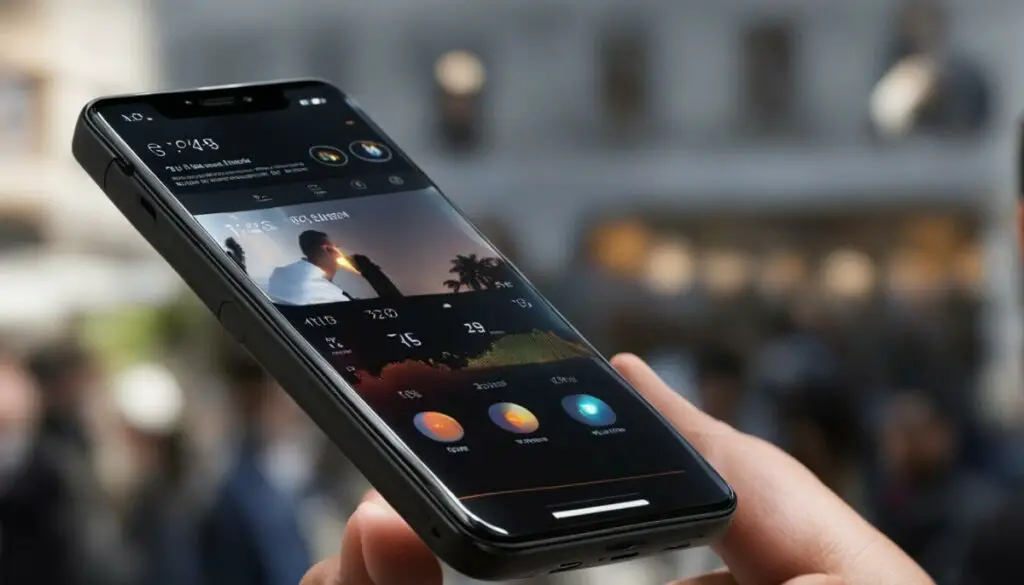
Smartphones with infrared technology have come a long way in recent years. There have been significant improvements made in terms of range, speed, and compatibility, making it a valuable feature for users.
One of the most significant advancements in infrared technology is the introduction of IR blaster, which gives users the ability to control a variety of electronic devices through their smartphones. This technology has become increasingly popular among consumers who want to simplify their home entertainment systems or control other devices remotely.
Another major development in infrared technology is the increased range and speed of communication. In the past, infrared communication was limited to a few feet, but now it can cover much larger distances up to 10 meters or more. Additionally, the speed of data transfer has increased significantly, allowing for faster and more efficient file sharing.
Furthermore, the compatibility of smartphones with infrared technology has also improved. Nowadays, more smartphone models are being released with built-in infrared capabilities, enabling users to enjoy the benefits of this technology without having to invest in separate devices or accessories.
“Smartphones with infrared technology have come a long way in recent years. There have been significant improvements made in terms of range, speed, and compatibility, making it a valuable feature for users.”
Overall, these advancements in infrared technology have opened up new possibilities for consumers, making it easier than ever to control electronic devices, transfer files, and manage their devices more efficiently. As technology continues to evolve, we can expect even more exciting developments in the world of infrared technology and its applications in smartphones.
Benefits of Having Infrared in Smartphones
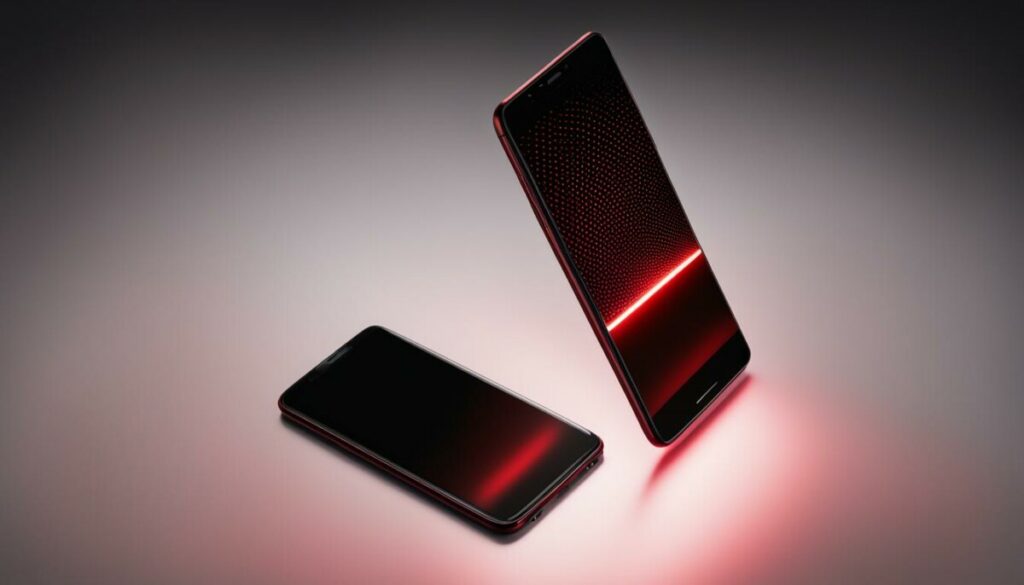
Smartphones with infrared technology are becoming increasingly popular due to their numerous benefits and advantages. In this section, we’ll explore some of the key reasons why having an infrared feature in your smartphone is a smart choice.
Remote Control Functionality
One of the primary benefits of having an infrared feature in your smartphone is the ability to use it as a remote control for a variety of electronic devices. With the help of apps like Peel Smart Remote, you can control your TV, air conditioner, and other appliances, eliminating the need for multiple remotes cluttering your living space.
Enhanced Connectivity Options
Smartphones with infrared also offer enhanced connectivity options. With the help of infrared, you can quickly and easily transfer files between your smartphone and other devices like your laptop or other phones. This is especially useful when you don’t have access to Wi-Fi or mobile data.
Simplified Device Management
Infrared-enabled smartphones also simplify device management. You can use your smartphone to control your TV, set-top box, and other devices, eliminating the need for multiple remotes and reducing clutter in your house. This feature can be especially beneficial for those who live in small apartments or dorm rooms.
Energy Efficiency
Infrared technology is also energy-efficient. Unlike Bluetooth or Wi-Fi, infrared does not require a constant connection between devices. Instead, it only sends signals when needed, reducing energy consumption and increasing battery life.
Cost Savings
Another benefit of having an infrared feature in your smartphone is cost savings. With the help of apps like Peely, you can control your electronic devices without the need for additional hardware, saving you money on expensive remotes or other peripherals. This can be especially useful in a commercial or office setting where multiple devices need to be controlled.
Limitations and Challenges of Infrared Technology
Infrared technology is undoubtedly convenient and useful in many ways. Unfortunately, it also comes with some notable limitations and challenges that users should be aware of before deciding to purchase a smartphone with infrared technology.
First and foremost, one of the most significant limitations of infrared technology in smartphones is the range. Infrared signals can only travel a short distance, generally around 10 meters or less. This means that if you want to control a device using your smartphone’s infrared feature, you need to be relatively close to it. This limitation makes smartphones with infrared technology unsuitable for long-range communication and control.
Another limitation of infrared technology is that it requires a clear line of sight between the devices. This can be a problem if there are any obstructions between the smartphone and the device it is trying to control. For example, if a user wants to control their television, the smartphone needs to be positioned in front of it without any objects blocking the signal.
Interference is another challenge that can affect the performance of smartphones with infrared technology. Other electronic devices emitting infrared signals in the same frequency range can cause signal interference and disrupt communication. This can lead to missed signals, slower response times, and other related issues.
Finally, infrared technology requires a power source to operate. This means that using the infrared feature on a smartphone can drain the battery relatively quickly, reducing the device’s overall battery life.
Alternatives to Infrared Technology for Smartphones
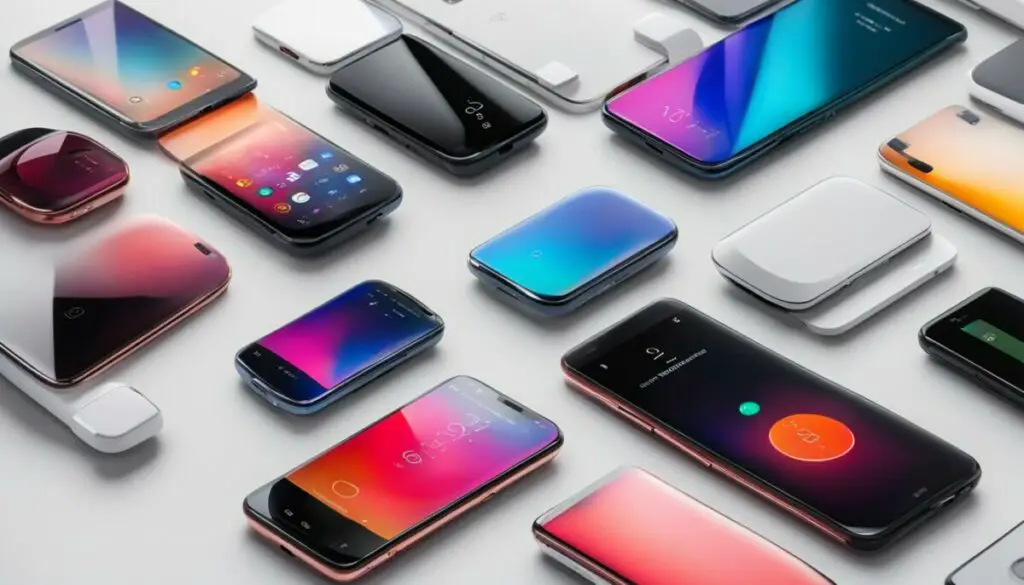
If your smartphone doesn’t support infrared technology, there are alternative solutions that you can consider. Here are some of the most popular ones:
Bluetooth
Bluetooth is a wireless technology that is commonly used for short-range data transmission between devices. Many smartphones support Bluetooth connectivity, which can be used to transmit data, share files, and even control other devices.
Near Field Communication (NFC)
NFC is a wireless communication technology that enables data exchange between devices that are in close proximity to each other. Many modern smartphones support NFC, which can be used to make payments, share data, and even unlock doors with compatible locking systems.
Wi-Fi Direct
Wi-Fi Direct is a wireless technology that allows devices to communicate with each other directly, without the need for a wireless access point. Many modern smartphones support Wi-Fi Direct, which can be used to transfer files, stream media, and even control other devices that support Wi-Fi Direct connectivity.
In summary, while infrared technology has its benefits, it is not the only option available for smartphone users. Bluetooth, NFC, and Wi-Fi Direct are all viable alternatives that can provide similar functionalities depending on your needs and preferences.
Future of Infrared Technology in Smartphones
As smartphone technology continues to evolve, so does the potential for infrared technology. It is expected that infrared-enabled smartphones will become more widely available and may even come as a standard feature in the coming years.
The future looks bright for infrared technology in smartphones as advancements in sensor technology and greater efficiency in power consumption drive growth in this space. Additionally, the integration of artificial intelligence and machine learning may further enhance the capabilities of infrared technology in smartphones.
With the increasing demand for remote control functionality and simplified device management, the potential for infrared-enabled smartphones is immense. The recent developments in 5G technology also open up the possibility for faster and more reliable data transfer using infrared.
However, there are certainly challenges to overcome, such as the range limitation, line-of-sight requirement, and potential interference. As a result, there may be a shift toward alternative technologies such as Bluetooth, NFC, and Wi-Fi Direct.
Overall, the future of infrared technology in smartphones is promising. It has the potential to revolutionize the way we interact with our devices and the world around us. As the technology advances, we are likely to see a growing number of smartphones with infrared technology and innovative applications of this feature.
Conclusion
Now that you know what smartphones have infrared capability and how the technology functions, you can make an informed decision on your next purchase. Remember, having an infrared feature in your smartphone can simplify your life in many ways.
Infrared-enabled smartphones can act as universal remotes, allowing you to control your entire home entertainment system with ease. They also offer enhanced connectivity options for file transfers and data sharing.
It is important to note that while infrared has its advantages, there are also limitations and challenges associated with the technology. Range limitations, line-of-sight requirements, and potential interference are all factors to consider.
Alternatives to infrared, such as Bluetooth and NFC, may provide similar functionalities. However, it is crucial to weigh the pros and cons of each technology and choose the one that best suits your needs.
The future of infrared in smartphones looks promising with potential advancements and widespread adoption on the horizon. As technology continues to evolve, we can expect new and innovative features that will enhance our smartphone experience.
Thank you for reading this article on what smartphones have infrared capability. We hope it has been informative and helpful in your search for the best smartphone to suit your needs.
FAQ
What is infrared technology in smartphones?
Infrared technology in smartphones allows the device to emit and receive infrared signals, enabling it to communicate and interact with other electronic devices.
Which smartphones have an infrared feature?
Some popular smartphones with an infrared feature include Samsung Galaxy S21, iPhone 12 Pro, Xiaomi Mi 11, and LG V60 ThinQ.
How can I use the infrared feature on my smartphone?
To use the infrared feature on your smartphone, you can download and install compatible apps from the app store, follow the specific instructions provided by the manufacturer, and ensure that your smartphone is pointed towards the device you want to control.
What are the benefits of having an infrared feature in smartphones?
Having an infrared feature in smartphones allows you to control various electronic devices, such as TVs, air conditioners, and sound systems, using just your smartphone. It provides convenience and eliminates the need for separate remote controls.
Are there any limitations to infrared technology in smartphones?
Yes, there are some limitations to infrared technology in smartphones. It requires a direct line of sight between the smartphone and the controlled device, has a limited range, and can be affected by obstacles or interference.
Are there alternative technologies to infrared for smartphones?
Yes, there are alternative technologies that can achieve similar functionalities as infrared in smartphones. Bluetooth, NFC, and Wi-Fi Direct are some examples of wireless communication technologies that can be used for device control and file transfer.
What does the future hold for infrared technology in smartphones?
The future of infrared technology in smartphones looks promising. Advancements in range, speed, and compatibility are expected, and widespread adoption of this feature may occur as manufacturers continue to innovate and improve its capabilities.

